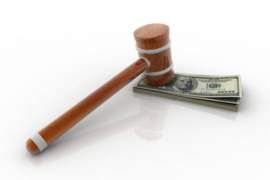
False Advertising In Depth

What is False Advertising?
The term ‘false advertising’, which is also referred to as deceptive advertising, is an illegal action taken by a marketer, manufacturer, or seller of a particular good or service to inaccurately advertise their underlying product. False advertising aims to persuade consumers in purchasing a product through the delivery of false or misleading statements.
To discourage marketers, manufacturers, or sellers from misleading the consumer base, the majority of governments will employ various regulations to eliminate the delivery of false advertising techniques.
The primary reason why false advertising is considered illegal in the United States and various other nations is that the consumer is given the undeniable and innate right to know what product or service they are purchasing. As a result of this right, the consumer base is awarded ‘truth in labeling’, which is the accurate and fair delivery of necessary information to a prospective consumer.
The delivery of information, including nutritional facts and other information regarding the product or service, is required to not only be delivered through the good’s advertising efforts, but also on the product’s label.
False Advertising Practices
False advertising, in any form, refers to advertiser’s techniques that are meant to deceive a consumer. As a result of this generic and loaded definition, even advertising techniques that only have the potential to be misunderstood by a consumer may be construed as false advertising.
In most instances, false advertising techniques will lead the consumer to believe that the individual is somehow profiting from a purchase. The individual is led to believe that he or she is getting a good deal, saving money, or buying a good that will perform in a specific manner.
False advertising can come in many forms. The specific information latent in the practice requires that the underlying product be purchased with the notion that the advertising technique was truthful. False advertising can arise when a producer claims that there is “20% more” in a given food product or that a particular good possesses the ability to perform a unique or direct function.
In general, any advertising statement attached to the good must be truthful. Therefore, if the product claims that there is “20% more” within the packaging, there must be an increase of 20%.
A common false advertising technique is referred to as ‘inflated price comparison.’ In this form, a retailer will raise the price of times and then offer them for lower “sales” prices to indicate to consumers that they are receiving a “good deal” on the purchase.
Other forms of false advertising may revolve around products sold with a rebate. The rebate in this instance is not received at the point of purchase, but instead claimed by the buyer in the future. In these instances of false advertising, the companies may delay the delivery of the rebate.
Regulations Concerned with False Advertising
Due to the many instances and opportunities that a manufacturer or seller may engage in false advertising, the United States Federal Trade Commission possesses the regulatory power to impede any potential misleading or deceptive claims made by the selling agency. To thwart false advertising techniques, the Federal Trade Commission will determine incidences where the potential to deceive is present in any attempt of advertising.
If any claims made in advertising a product or service lead to a purchase because of the delivery of misleading or deceptive information, the underlying seller will be guilty of false advertising.
NEXT: Food Labeling




















